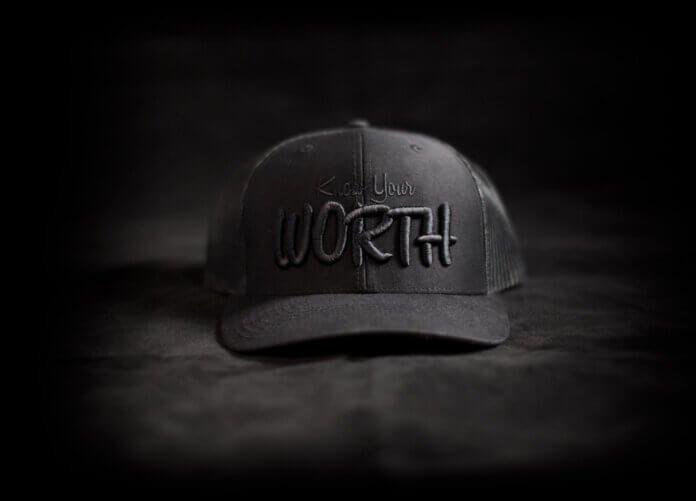The thick and strong graphics that you see on many baseball hats and other products may now be enjoyed by everyone thanks to 3D puff digitizing. Isn’t it true that the designs are amazing?
We’ll walk you through the steps involved in creating these eye-catching puff embroidery designs in this tutorial.
The use of 3D embroidered foam gives the caps their 3D appearance. Creating these puff designs yourself sounds doable, right? The answer is yes, but you will have to put in a lot of time and effort to achieve the greatest results.
Is it possible to create a 3D Puff Digitized?
Create 3D designs on garments, such as caps, with this method. In the last two or three years, interest in 3D puff digitization has grown significantly, despite the fact that it has been present for quite some time.
The unique foam utilized behind the stitching is the key to all of the best 3D puff patterns.
Non-toxic and water-resistant, the 3D foam may be machine washed. Colors include Black, Blue (various tints available), Gray, Pastel pink, Red, Violet, and White, as well as yellow and yellow-green.
3D puff embroidery digitizing software like Wilcom embroidery software will help you produce the best patterns. Fortunately, there are a lot of tutorials out there to help you out. To get the best results, take your time learning how to use all of the tools.
The software tool will let you create machine-ready files after your 3D puff embroidery artwork is complete. You’ll need to put in a lot of time and effort to get the design just right, so be prepared to put in a lot of time and effort.
How to Digitize 3D Puffs with Smart Tips?
Decide the dimensions of your design
The dimensions of your design will need to be determined before you begin using your software for 3D embroidery digitizing. Maybe you should choose a design with a height of 2 or 2.5 inches?
Stitching Tie-Ins and Tie-offs
The next step is to determine the correct values for the sewing of the tie. In most cases, you can find the properties option in a menu and make the appropriate adjustments. If you notice a “tie-in and tie-off” option, we suggest setting it to 5.
Tie-in and tie-off instructions will be provided with a total of 5 stitches. As for the 3D foam’s thickness, 5 is the greatest setting we’ve discovered to work with it. The embroidery stage necessitates that the thread is completely secure.
Digitizing of the Puff is now in progress.
Now is the moment to begin digitizing your design using puffs. To begin 3d puff digitizing, we recommend that you use a “walk stitch” set to 20 points.
This will help keep the foam in place on the garment’s fabric. The walk stitch should match the edge of your puff design as closely as possible for optimal effects. You must now digitize two layers of walk stitching on the interior of the pattern.
Stitching using Satin Thread
If you want to create a raised 3D effect with your puff embroidery designs, use satin stitching. The 3D foam will be covered by the satin stitching, and you’ll need to fasten the ends.
The needle penetrations of a 3D puff embroidery machine removes any surplus 3D foam. Stitch stain the top and bottom of your design.
In the event that you don’t, the foam is likely to come loose from the clothing. The “pinching” or “capping” method of closing the satin stitching might be used.
Capping involves digitizing a smaller point satin stitch that runs vertically to the ends beneath the top final satin stitch. Your needle will penetrate all the way around your design when you change directions for the final top satin stitch.
We’ll use capping as an example here. Select the capping option from the menu. Close both ends of the thread with a walking stitch in the center of the path. Here you can select a 3-point density.
The Satin Stitch at the Very Top
You need to create a puffed pattern that maintains a consistent density across this piece. In order to “stitch lines larger,” we recommend that you use the 1.8-point and 200-point fill options.
Don’t worry if this doesn’t make a lot of sense right now; there will be options in your software to accomplish this.
For 3D Puff Digitizing, Consider the following:
- To avoid creating bulk in your design, do not attempt to stitch the puff first. It’s time to finish off the sewing on this last project. Lay the 3D foam on the clothing to begin the process.
- The needle makes holes as it enters the 3D foam holes. When you’re done sewing, you’ll be able to rip away any extra fabric. To achieve the desired effect with 3D foam, your design’s elevated appearance must appear bulky.
- Satin stitch designs can range from 3mm to 11mm in width. Your design will determine the ideal width. For 3D puff embroidery patterns that include letters, we propose alphabet text. These will need to be modified to work with the foam and avoid any open ends.
- Attempting 3D puff embroidery on slippery or delicate textiles is a bad idea. The “in-hoop” movement that occurs when the 3D foam is used. It is more noticeable on textiles like these, which is one of the primary reasons behind this. Due to the high density of stitching utilized in puff embroidery designs, these materials are typically incapable of handling the weight of these designs.
Stronger and more sturdy materials. Such as those used to make baseball caps, are better suited for 3D puff embroidery. Because the 3D effects fade fast, we don’t recommend trying puff embroidery on towels either.
